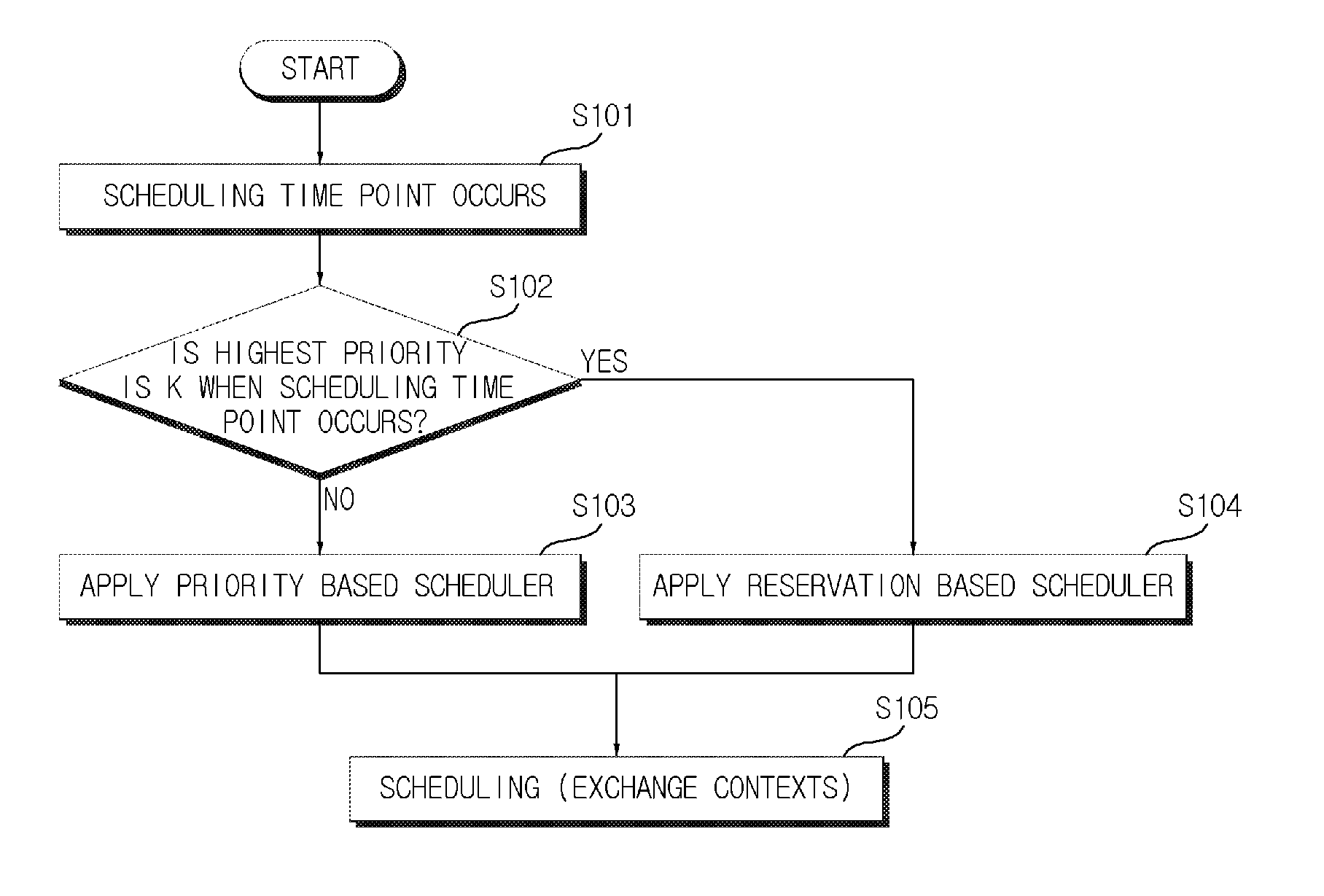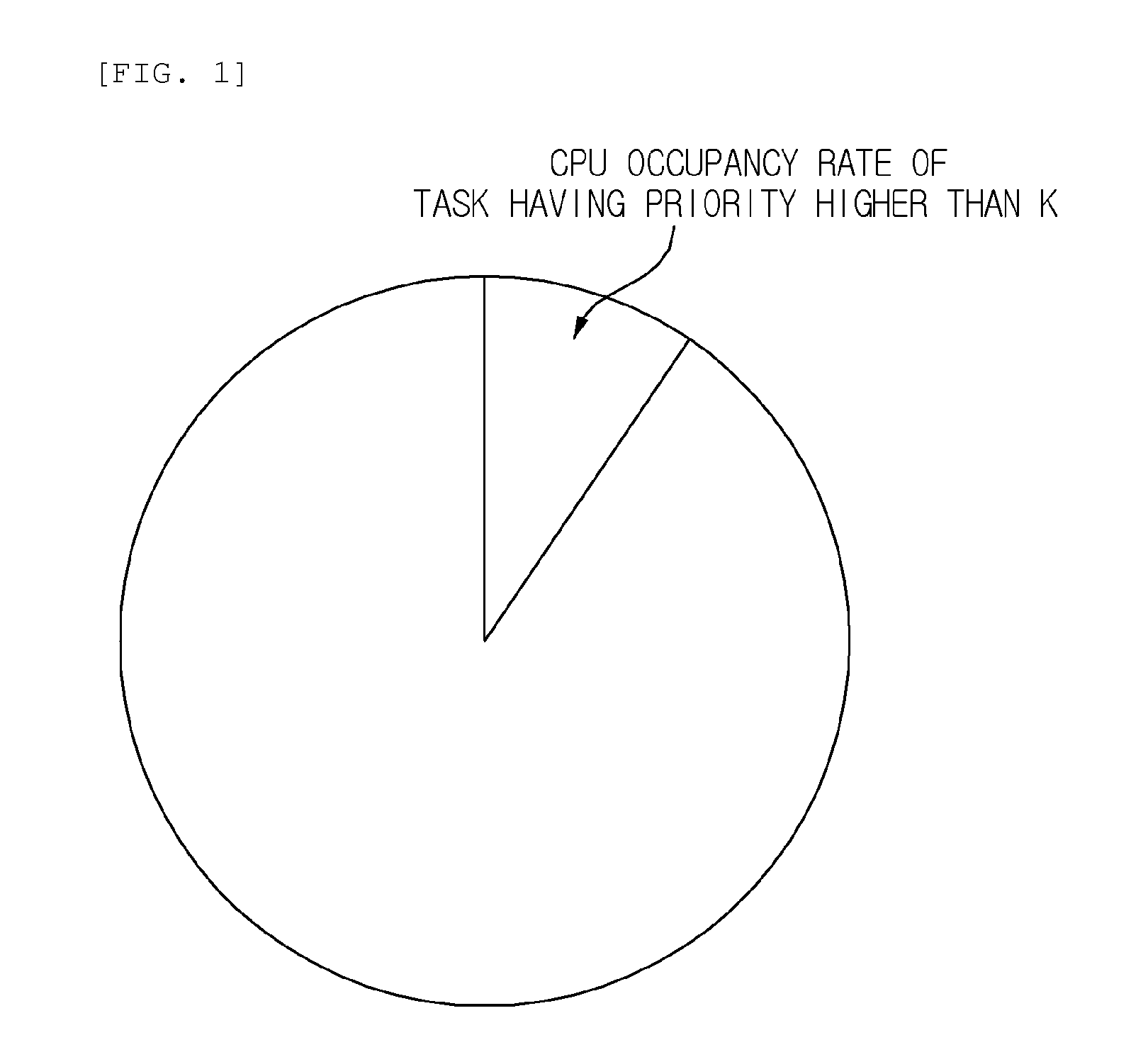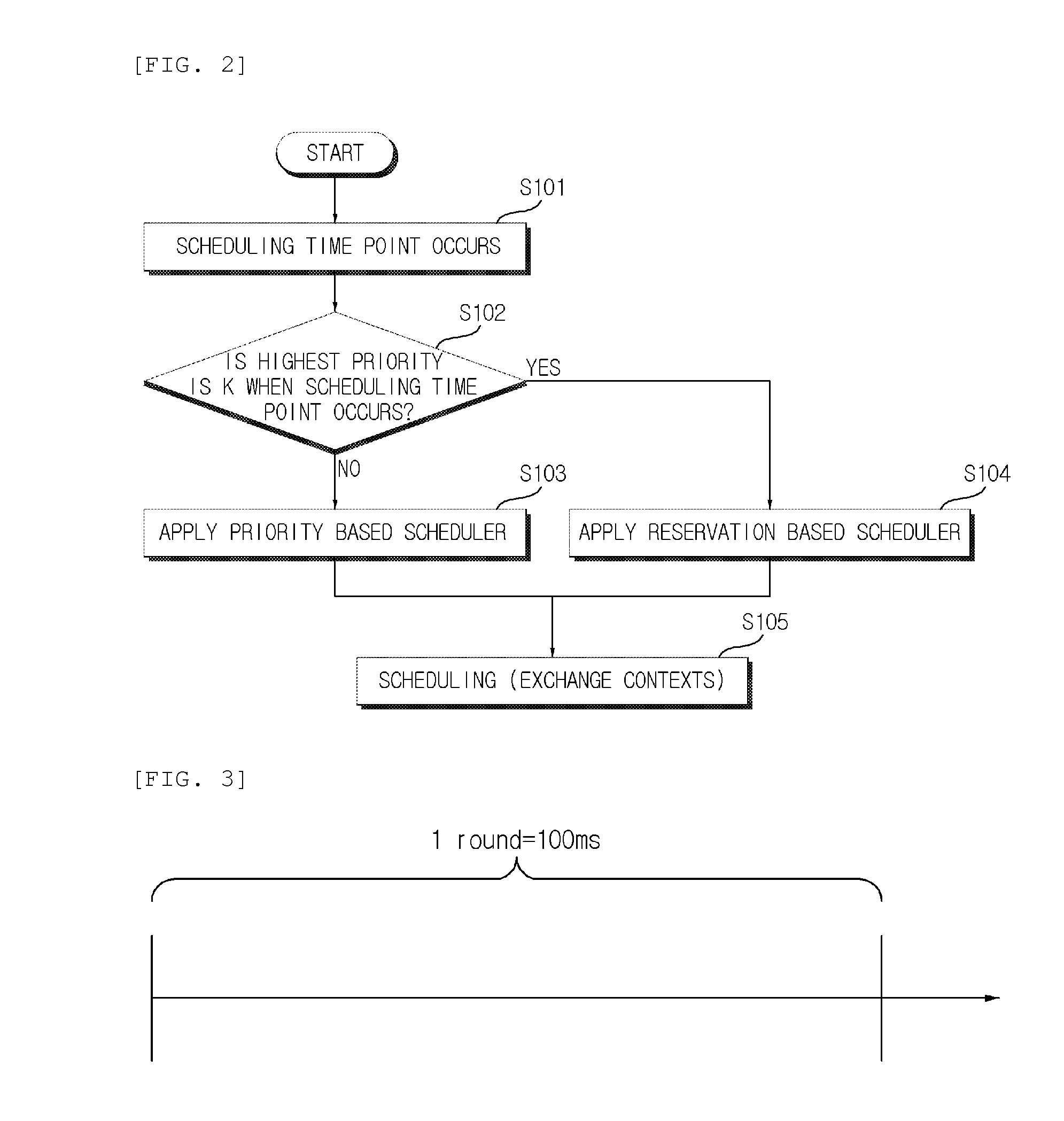Task scheduling method for real time operating system
a task scheduling and real-time operating system technology, applied in the field of task scheduling methods, can solve the problems of task execution time becoming longer, task having low priority not to be executed, priority based scheduling methods not always the best solutions, etc., and achieve the effect of scheduling freedom and convenient realization
- Summary
- Abstract
- Description
- Claims
- Application Information
AI Technical Summary
Benefits of technology
Problems solved by technology
Method used
Image
Examples
Embodiment Construction
[0019]Hereinafter, a task scheduling method for a real time operating system according to an exemplary embodiment of the present invention will be described with reference to the accompanying drawings.
[0020]Prior to a detailed description of the present invention, basic assumptions will be described as follows.
Basic Assumptions
[0021]1) An operating system provides several priorities and all tasks have priorities of their own. A task having a high priority has an execution priority higher than that of a task having a low priority. A set of tasks a priority of which is X is defined Tx. A priority value of a specific task tj is denoted Prio(tj), tj∈Tx. Throughout the specification, it is assumed that a task having a high priority has a high priority (positive method).
[0022]2) Among the priorities provided by the operating system, one specific priority (for example, K) may correspond to several tasks and the remaining priorities except for K may correspond to only one task, respectively...
PUM
 Login to View More
Login to View More Abstract
Description
Claims
Application Information
 Login to View More
Login to View More - R&D
- Intellectual Property
- Life Sciences
- Materials
- Tech Scout
- Unparalleled Data Quality
- Higher Quality Content
- 60% Fewer Hallucinations
Browse by: Latest US Patents, China's latest patents, Technical Efficacy Thesaurus, Application Domain, Technology Topic, Popular Technical Reports.
© 2025 PatSnap. All rights reserved.Legal|Privacy policy|Modern Slavery Act Transparency Statement|Sitemap|About US| Contact US: help@patsnap.com



